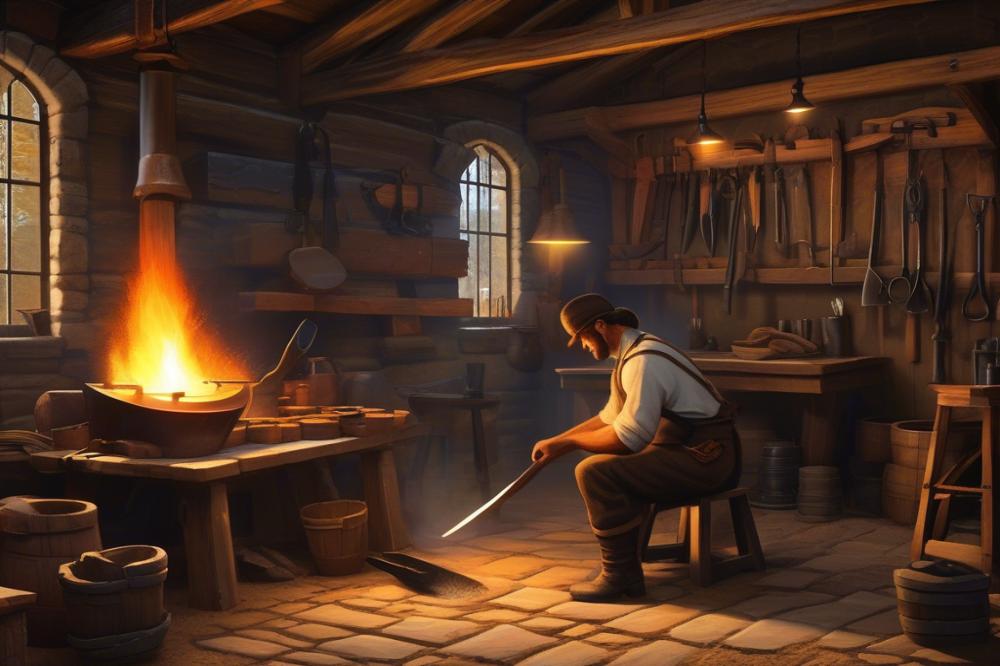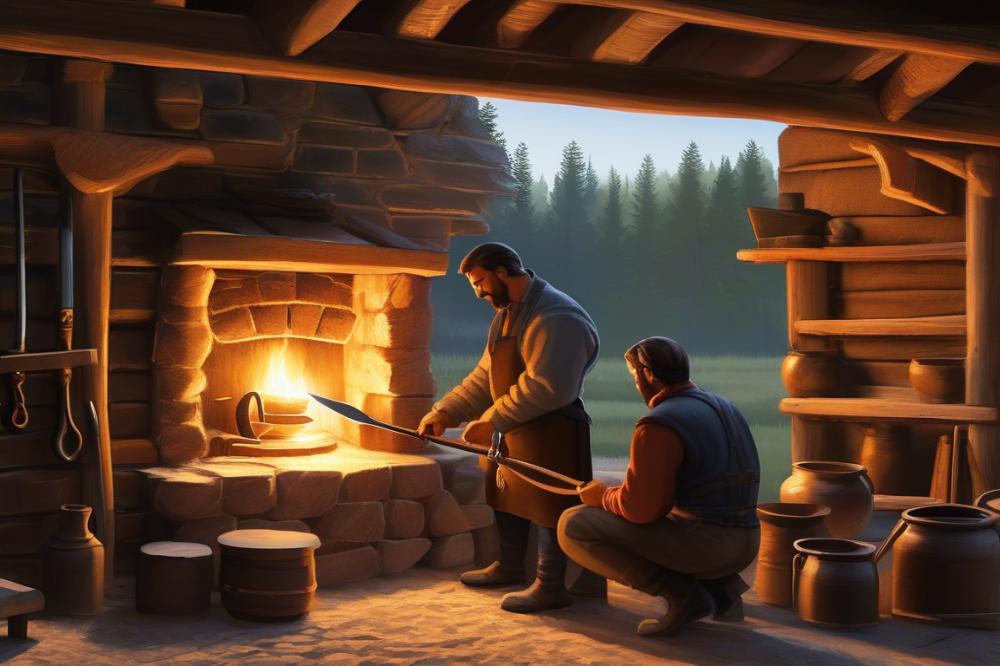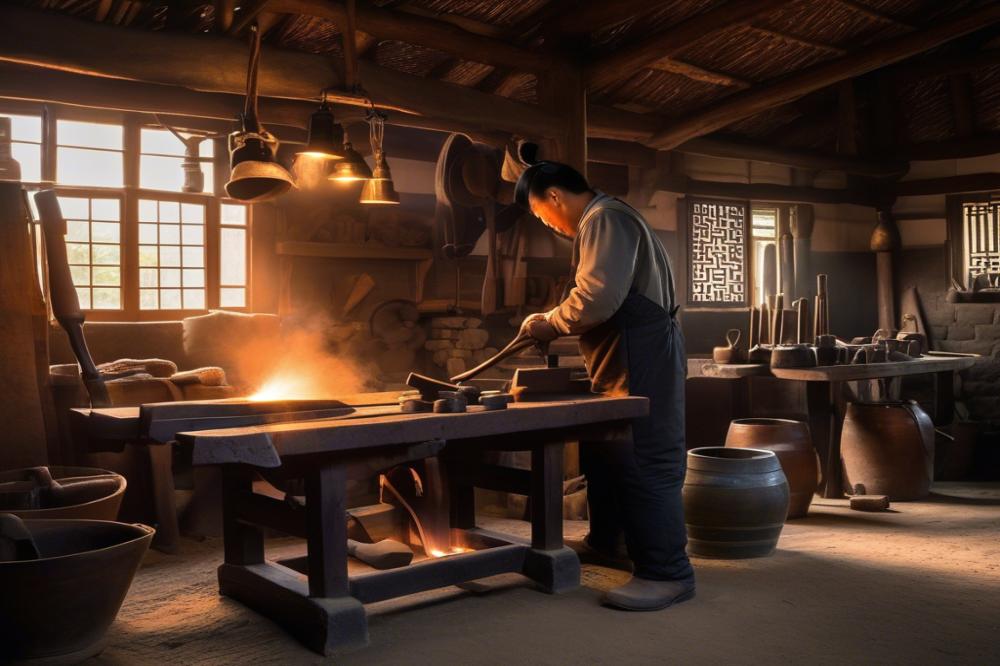Introduction
Traditional horse shoeing in China has a rich history that extends back thousands of years. Horse owners and caretakers developed methods to protect and care for these animals, recognizing the importance of their hooves. A strong hoof contributes to a horse’s health and well-being, and it plays a critical role in their performance and livelihood.
The significance of Traditional Horse Shoes goes well beyond mere protection. They are a part of the deep bond between humans and horses. With the right shoe, a horse can run faster, jump higher, and work harder. This connection is vital in equine care, where every detail is considered to keep the animals comfortable and productive.
Blacksmithing and Farrier Practices
Blacksmithing in China has evolved over the years alongside horse shoeing techniques. Farriers, or skilled professionals who specialize in this trade, blend artistry with craftsmanship. Much time is spent mastering the methods to create the right shoe for each horse’s specific needs. Knowledge passed down through generations emphasizes the art of fitting and shaping each shoe. This expertise ensures that the horses receive proper care, enhancing their overall stability and health.
The combination of Ancient Techniques and modern practices makes horse shoeing a fascinating topic. Each region in China may harbor its unique methods, offering insight into local traditions. This diversity reveals how deeply intertwined human culture is with the animals they work alongside. As we explore these practices, it becomes clear that horse shoeing is not just a practical necessity; it is an expression of respect and dedication to these magnificent creatures.
Historical Significance of Traditional Horse Shoe Techniques

Origins of Horse Shoeing in Chinese Culture
Horse shoeing has deep roots in Chinese history. It dates back thousands of years. Ancient texts suggest that upon domestication of horses, early Chinese people recognized the need to protect their hooves. Initially, they used simple materials like cloth, leather, and bamboo. Over time, iron was introduced, enhancing durability and effectiveness. This practice became essential for horses used in agriculture, transport, and warfare. They provided vital support for soldiers and farmers alike.
Evolution of blacksmithing Practices Over the Centuries
Blacksmithing in China has transformed significantly. During the Han Dynasty, the craft gained great importance. Artisans started to combine form with function in their work. The introduction of advanced techniques, such as heating and hammering metals, improved the quality of horse shoes. By the Tang and Song dynasties, specialized blacksmith shops emerged across the country. The knowledge of metallurgy spread, and local traditions shaped these practices. Today’s farriers stand on the shoulders of centuries of experience and innovation.
Cultural Heritage and Its Influence on Modern Farrier Practices
Cultural traditions play a crucial role in shaping modern practices. Today, many farriers in China still respect Ancient Techniques. Learning from elders helps preserve the skills passed down through generations. Local festivals often showcase this craftsmanship, celebrating the bond between humans and horses. Each region may have its unique style and approach to shoeing horses. Recognition of this heritage highlights its relevance in contemporary society. Interest in traditional methods continues to inspire new practitioners. This blend of history and modernity creates a rich tapestry of knowledge in horse shoeing.
Traditional Techniques in Horse Shoeing

Materials Used in Traditional Horse Shoes
Horse shoes in ancient China were crafted from various materials that reflected both function and environment. Iron was the most common metal due to its strength and durability. Local blacksmiths often sourced iron from nearby mines. Sometimes, copper or bronze was used for decorative purposes. While these materials offered some level of protection, they also allowed for creativity in design. Leather was another vital component, often employed as padding between the shoe and the horse’s hoof. This layer would absorb shock and provide comfort during long journeys.
Art of Metalwork in Ancient Chinese blacksmithing
Blacksmithing in ancient China was an esteemed craft. Skills were passed down through generations, making it a revered profession. Craftsmen learned to heat iron to extreme temperatures, then hammer it into shape. This process required precision and strength, as the blacksmith molded the metal with care. Ancient texts even mention the philosophy behind this craftsmanship. Creating a horse shoe was more than just a task; it was an art form. Each strike of the hammer echoed a tradition that blended function with elegance.
Step-by-Step Process of Traditional Shoeing Methods
The traditional shoeing process begins with careful examination of the horse’s hooves. A skilled horse shoer inspects for any signs of wear or injury. Cleaning the hoof is next. This part involves removing dirt and debris. After cleaning, the shoer measures the hoof to determine the shoe size. Once the proper size is established, it is time to heat the iron. The shoe is placed in a forge until it glows bright red. At this point, the blacksmith carefully shapes the shoe, ensuring it fits perfectly.
Nailing the shoe to the hoof comes next. This step demands a steady hand and keen eye. The shoer aligns the shoe with the hoof, securing it with specially crafted nails. Each nail must pierce the hoof wall, avoiding sensitive areas. After nailing, the shoer checks the fit. Final adjustments might be necessary to ensure comfort. A brief test walk helps observe the horse’s movement. With everything in place, the horse is ready for its next adventure.
Modern Practices in Horse Shoeing
Integration of Traditional Techniques with Modern Technologies
Modern horse shoeing often blends ancient practices with today’s advancements. Craftsmen now utilize tools that improve precision. Digital measurements guide farriers in crafting shoes. This combination allows for a more tailored fit for each horse. Traditional methods, such as shaping shoes by hand, still play an important role. These techniques provide a foundation, ensuring that the horse’s comfort is prioritized.
Impact of Modernization on Farrier Practices and Equine Care
The arrival of new technologies has dramatically changed how farriers work. For example, the use of electric grinders makes it easier to shape shoes quickly. This shift helps reduce the time spent on each horse. Consequently, more horses can be attended to in a single day. Increased knowledge about equine health also shapes farrier practices. Today’s farriers are not just skilled in shoeing; they are knowledgeable about horse anatomy and welfare.
New Materials and Methods in Contemporary Horse Shoeing
Innovation is evident in the materials farriers choose. Traditional metal shoes now compete with composite alternatives. These new materials can be lighter and offer more durability. Some even absorb shock, providing better protection for horses’ hooves. Additionally, contemporary methods sometimes involve glue-ons instead of nails. Such techniques can reduce discomfort for certain horses while still providing support. As practices evolve, the focus remains on the horse’s wellbeing.
The Role of Traditional Crafts in Contemporary Society
Preservation of Ancient Techniques in Modern Blacksmithing
Blacksmithing remains a vital part of Chinese culture. Traditional craft techniques have been practiced for centuries. These methods are passed down through generations. Master craftsmen teach apprentices the skills needed to shape metal effectively. Today, some blacksmiths combine old styles with new technology. While modern tools can make the work easier, many artisans prefer hand tools. This decision helps them maintain authenticity. Each strike of the hammer is a connection to the past. Communities often host workshops to share this knowledge. Such gatherings keep the art alive and encourage younger generations to learn.
Cultural Significance of Horse Shoeing within Communities
Horse shoeing has deep roots in many regions of China. It is not just about metalworking; it reflects a way of life. Traditionally, horses played a vital role in agriculture and transport. The act of shoeing is seen as an important ritual. Many communities celebrate this craft with festivals. During these events, blacksmiths demonstrate their skills. Observers appreciate the craftsmanship and stories behind each piece. Local legends often highlight the bond between horses and humans. These tales reinforce the importance of horse shoeing as part of cultural identity.
Challenges Faced by Traditional Craftsmen
Despite its significance, traditional craftsmanship faces obstacles. Modernization poses a threat to ancient techniques. Young people often prefer jobs in urban areas. They might see blacksmithing as outdated. Additionally, the cost of materials can be high. This may discourage some from pursuing their craft. Many traditional blacksmiths struggle to find customers. Mass-produced products flood the market, making it hard to compete. There is also a lack of recognition for artisans. Support from local communities is essential to keep practices alive. As these craftsmen face uncertainty, their future hangs in the balance.
Final Thoughts
Traditional horse shoeing in China carries a rich legacy. This practice is not merely a trade; it embodies centuries of cultural significance and skilled craftsmanship. Blacksmithing has played a vital role in this tradition, showcasing the artistry involved in each hand-forged shoe.
As modernization sweeps across various cultures, including our own, the future of these ancient techniques faces challenges. New methods may seem more convenient, but we risk losing valuable knowledge and practices that have served equine care well for generations. It is essential for communities to recognize the importance of preserving such skills, as they offer insights into history and craftsmanship.
Promoting an appreciation for this cultural heritage can inspire younger generations. Engaging with local blacksmiths and participating in workshops can revive interest in traditional Chinese horse shoeing. By fostering dialogue around these practices, we can bridge the gap between past and present. Understanding the past enables us to craft a better future, one that honors both innovation and tradition.
Every horse that wears a shoe tells a story. Each forge that rings with the sound of metal shaping holds memories of old. Embracing these values helps keep traditions alive while ensuring we do not forget where we came from. Thus, the journey of traditional practices continues.



